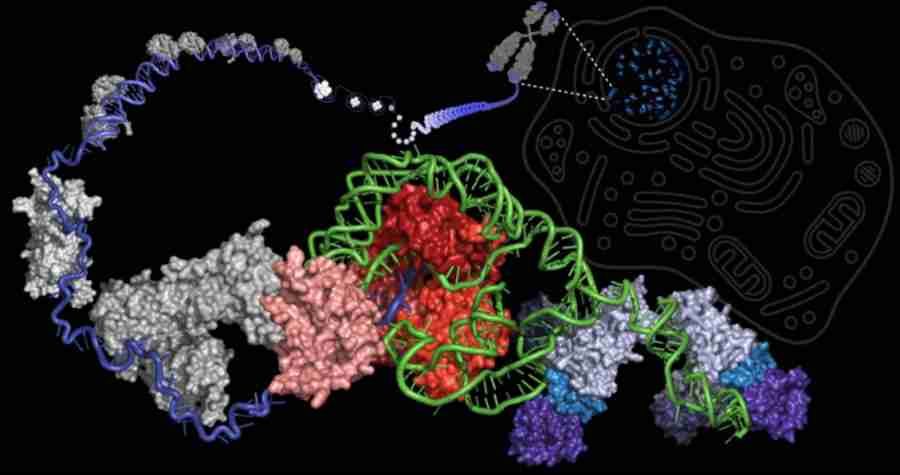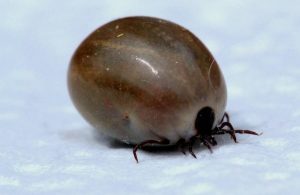
We can stay forever young? Secret of immortality enzyme discovered
Arizona researchers have discovered an internal inhibitor in telomerase, an enzyme that is responsible for the process of cell renewal. With this, experts hope to produce a drug that will “recharge” the human body’s cells and give them the ability to continue growing, and thus stop some of the body’s aging processes.
Telomerase is an enzyme that ry adds the last stretch of DNA strand in dividing cells rks. Most of it is used in intensively proliferating cells stem cells. As we age, however, telomerase activity decreases, which, according to scientists is one of the causes of aging of the human body.
Gradually disappearing ability to replicate com rek humans were discovered by Leonard Hayflick already p ł century ago. Since then, m i „Hayflick limit”, kt ry means the maximum number of divisions in rkowe. It has previously been shown that there is a correlation between telomeres – Specifically, their length, and the number of possible divisions of the in the com rki.
Gl The main task of telomeres is to stop unwanted and unstructured copying of DNA, which re could destabilize the entire genome. Such unstoppable action of telomer is observed when the growth of com rek tumor cells. Scientists have so far failed to understand exactly the mechanism that ry would be responsible for shortening the telomeric in healthy cells rkach of the organism.
A recent study conducted at the Molecular Sciences Laboratory at Arizona State University sheds new light on the causes of „Hayflick limit” and the subsequent mortality of com rec of the organism.
Molecular „fountain of youth”?
Every time a cell division occurs rki, telomeres shrink and after some time are no longer able to protect the ends of the ek chromosome in the com rkach. This continuous reduction in the size of telomeres in is sometimes referred to as „molecular clock”, kt ry countdown to the end of a cell’s life cycle rki. Thus, it determines old age in human understanding.
The disappearance of telomeres is counteracted by an enzyme called telomerase, which ry may be the key not only to maintaining the youthfulness of the com sharks, but even to reverse to fully restore the aging process. This enzyme is responsible for adding additional telomeres in to the ends of the replicated genetic code. However, the action of telomerase is not enough to fully restore the restore lost telomeres, i.e. stop the aging process of cells rek.
The gradual shrinkage of telomeres In negatively affects the ability to replicate the cell in the human body. It is a also the reason for which The body of an adult human atrophies the com stem cells.
Realizing the full potential of telomerase
Understanding the action of telomerase offers a chance to reverse the price of some rks in aging and a significant improvement in the quality of life of individuals b in old age. Arizona researchers have discovered a specific DNA structure in telomerase that ra is responsible for adding the telomeric at the ends of the chromosome .
It turned out that telomerase has a built-in pause system, an internal „brake”, intended to ensure the correct synthesis of the repeat of DNA shortening at telomeres. Finding a way to free the enzyme from this brake offers the possibility of restoring the cation of the com rkom their „of youth”.
A single nucleotide is responsible for the pause system, which ry stimulates telomerase activity. By learning about and utilizing this „brake”, Telomerase function can be „recharged”, which will ultimately halt the shortening of telomere lengths in and enable „rejuvenation” aging human com stem cells.
The danger of telomerase
Many human diseases b is associated with telomerase enzyme malfunction and accelerated cellular aging records. Deficiency telomerase worsens the condition of the organ in internal due to the lack of an adequate number of cell rec for replication. Increasing the activity of the enzyme may give people with the disease a chance for a complete cure.
Unfortunately, telomerase can also be dangerous. On the one hand, it can inhibit the aging of com rek, on the other hand com cancerous tumor cells use this enzyme for their abnormal and destructive growth. The use of telomerase in medicine will therefore have to be very precise in order not to increase the risk of developing cancer in humans.
Researchers emphasize Also that the research is primarily concerned with human human stem cells. This is because the others show less susceptibility to telomerase activity. Due to the increasing risk of developing cancer , drug kt ry would increase telomerase activity throughout the human body is not desirable. However, the precise selection of com rek, kt re were to undergo therapy would make it possible to cure many diseases b and stopping some The process in aging.
Source Source: Arizona State University , ScienceDaily , National Center for Biotechnology Information , photo. Arizona State University, The photo shows the enzyme telomerase, as also telomeres relative to the chromosome

